Modern Life is challenging in ways our ancestors never imagined.
It’s nice to have a place to get away from it all once in a while.
“A place to unplug and watch the day go by” is the way Bayly Buck, president of the Wading Place Hunting Club in Queen Anne’s County, describes that kind of sanctuary. “A world apart. A step back in time.”
The Wading Place, 1631: Back when English colonists established their earliest communities in America, the shores of the Chesapeake Bay were among some of the first places they settled. In 1631, a pioneer named William Claiborne built a trading post on the largest island in the Chesapeake Bay. Claiming the island for Virginia, Claiborne named his Jamestown outpost after his British hometown of Kent.
Sometime soon after, nobody knows exactly when inhabitants of the region started calling the area where one could pass between The Isle of Kent and the eastern mainland without using a boat, “The Wading Place.”
And not only don’t we know for sure when Kent Island’s Wading Place came into being, nobody really knows where it was either.
An obvious assumption is that it was most likely located near what we now call Kent Narrows, the strait separating the island from the rest of the Eastern Shore while connecting the Chester River to Prospect Bay. According to J. Coursey Willis, president of the non-profit Historic Kent Island (https://historickentisland.org/), the earliest evidence of The Wading Place’s location, patented in 1649, has been lost to the tides of history, but there is an existing survey issued in 1658 identifying a 300 acre parcel on the east side of Kent Island as Wading Place Neck.
In Willis’s opinion, the northwestern landmark of what was the Kent Island side of “The Wading Place” would be located in the vicinity of Queen Anne’s County’s present-day Ferry Point Park and run south to the area around the county boat slips and the Kent Island Yacht Club near Goodhands and Kirwans Creeks. There are also references from this time to Wading Place Swamp and Wading Place Bay. Willis thinks Wading Place Swamp was probably what we call Piney Creek, and Wading Place Bay is what’s been known since at least the mid-19th century as Prospect Bay.
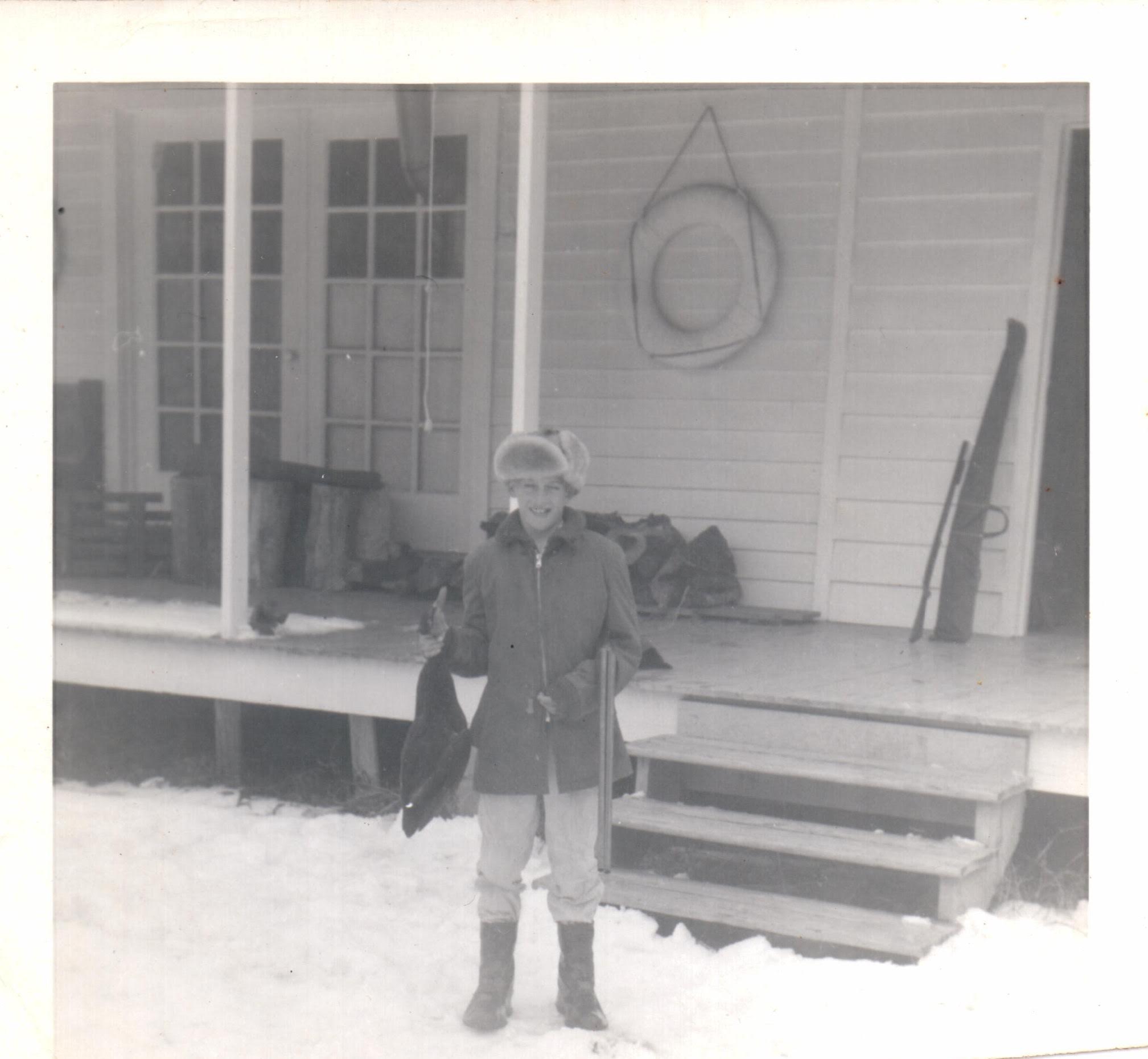
Bayly Buck 1st Duck Fall 1962
The Wading Place Hunting Club, 1945: Locals and travelers alike have always needed to cross back and forth between Kent Island and Delmarva proper. According to Willis’s research, the first official mention of a ferry at The Wading Place was in 1711. A series of causeways and bridges have subsequently been built at Kent Narrows over the years, including a 1902 railroad bridge and the still-existing drawbridge that opened mere months before the Bay Bridge was dedicated in 1952.
When that drawbridge was built, Kent Narrows was nearing the end of its fifty-year run as one of the hubs of a seafood packing industry that supported a big portion of the regional economy.
In the mid-to-late 1940s and early 1950s, The Eastern Shore was undergoing significant changes. A way of life that generations grew up experiencing was nearing an unprecedented cultural transition.
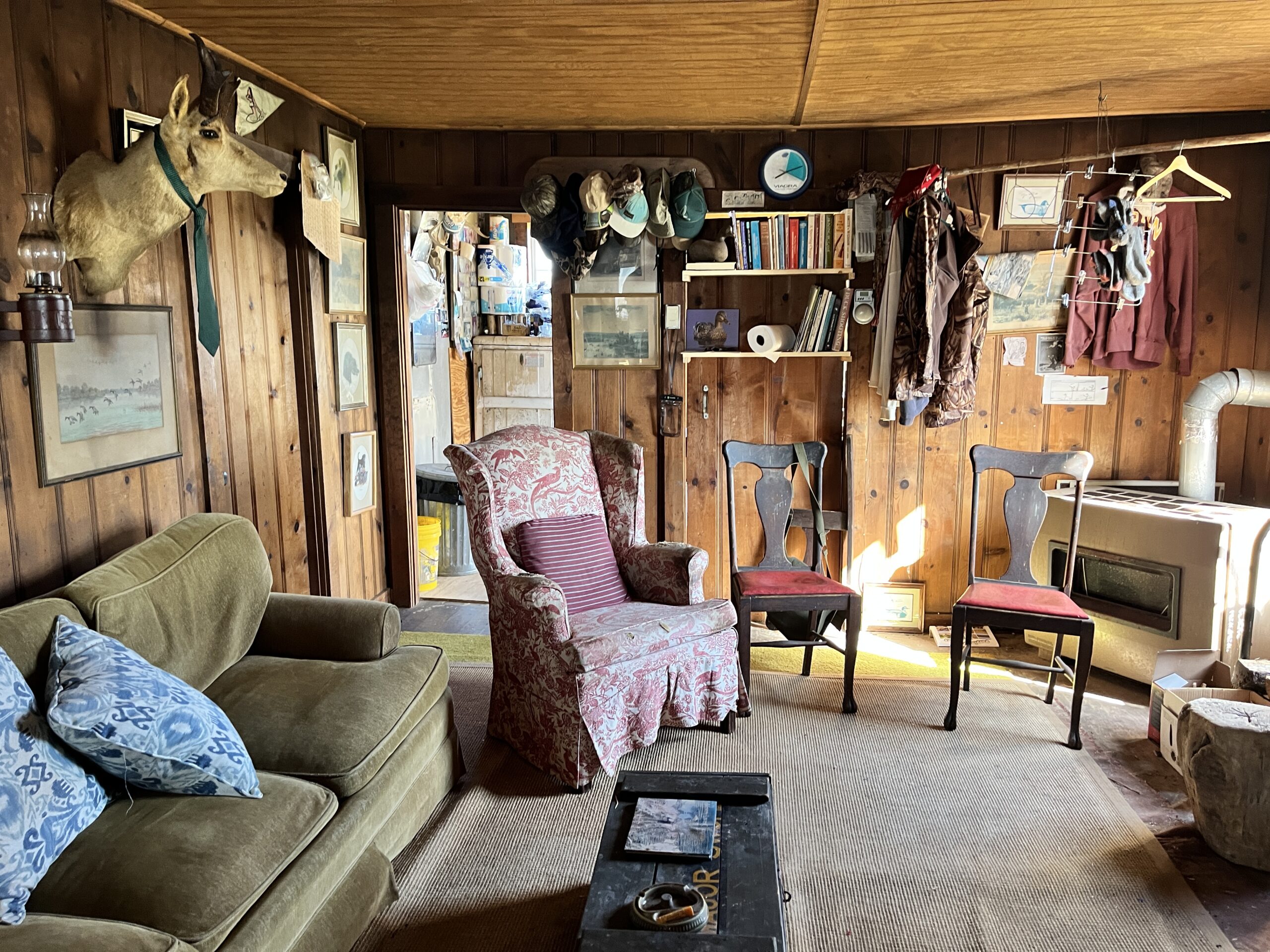
In 1945, John C. Legg Jr., a Baltimore investment banker, purchased thirty acres of the Horsehead Peninsula on the eastern Grasonville side of Prospect Bay and called the hunting retreat he built for family and friends The Wading Place. Legg created a corporation, issued stock that was issued completely to his two daughters-in-law, and sat a board of directors that consisted of himself and his sons, John the Third and William. John died in 1952 at the age of 41. A year later, William was fatally shot in a hunting accident at The Wading Place. He was 33. His 9-year-old son was in the duck blind with his dad when it happened. Afterward, the Wading Place Hunting Club was sold to eight friends, including Dr. Walter ‘Dick’ Buck, whose cousin’s son Bayly is The Wading Place Club’s current point man.
Bayly Buck first visited the club when he was 12 years old, and though he was not originally a fan of the cold hunting season weather, he learned to love the place and the bonding opportunities he experienced there, as well as the area’s wild beauty and the feeling of being apart from the surrounding modern world. He says that to look at it, the clubhouse doesn’t present much of an image, facilities are rudimentary at best, but members past and present have loved it that way. “Wading Place has remained a boys club,” says Buck. “Cast-off furniture, no doilies, no curtains, and no big chores to do.” It’s a great spot, he says, “to just relax in resplendent squalor.”
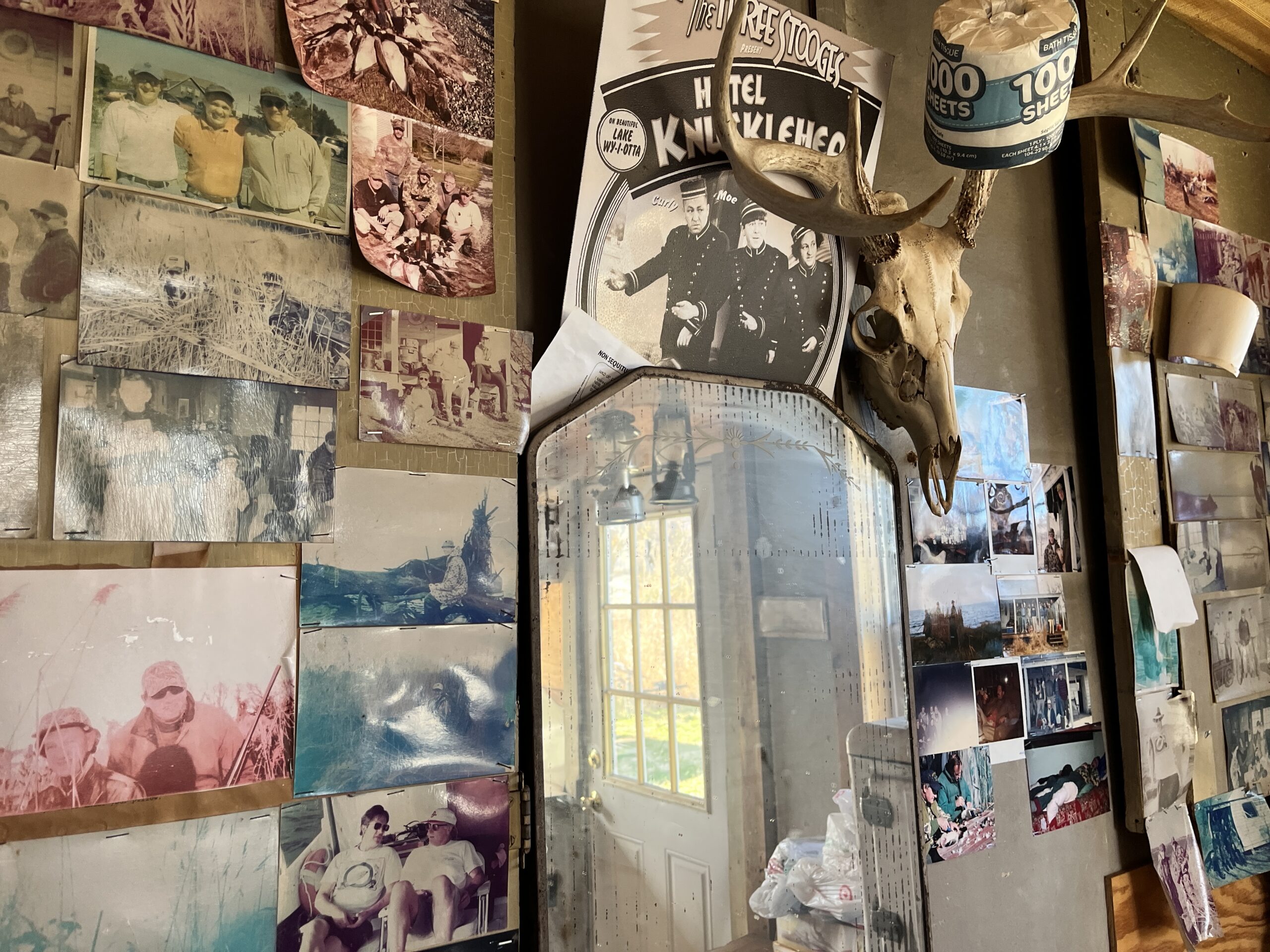 The Wading Place, 2024: Between 1981 and 1998, The Wildfowl Trust of North America, with the intent to protect endangered wetlands through education and stewardship, purchased the entire Horsehead Peninsula with the exception of the 30 acres owned by The Wading Place group. On a mission to create a bond between people and the world around us, the Chesapeake Bay Environmental Center (https://bayrestoration.org/) offers both recreational and educational opportunities for visitors of all ages.
The Wading Place, 2024: Between 1981 and 1998, The Wildfowl Trust of North America, with the intent to protect endangered wetlands through education and stewardship, purchased the entire Horsehead Peninsula with the exception of the 30 acres owned by The Wading Place group. On a mission to create a bond between people and the world around us, the Chesapeake Bay Environmental Center (https://bayrestoration.org/) offers both recreational and educational opportunities for visitors of all ages.
An educator, coach, and conservationist, Matt LaMotte, a member of the Wading Place club for more than fifty years, says his group has been longtime advocates of their environmental center neighbors. “We’ve had members who have sat on the CBEC board, we provide financial support whenever we’re needed, and we maintain a portion of the center’s trails.”
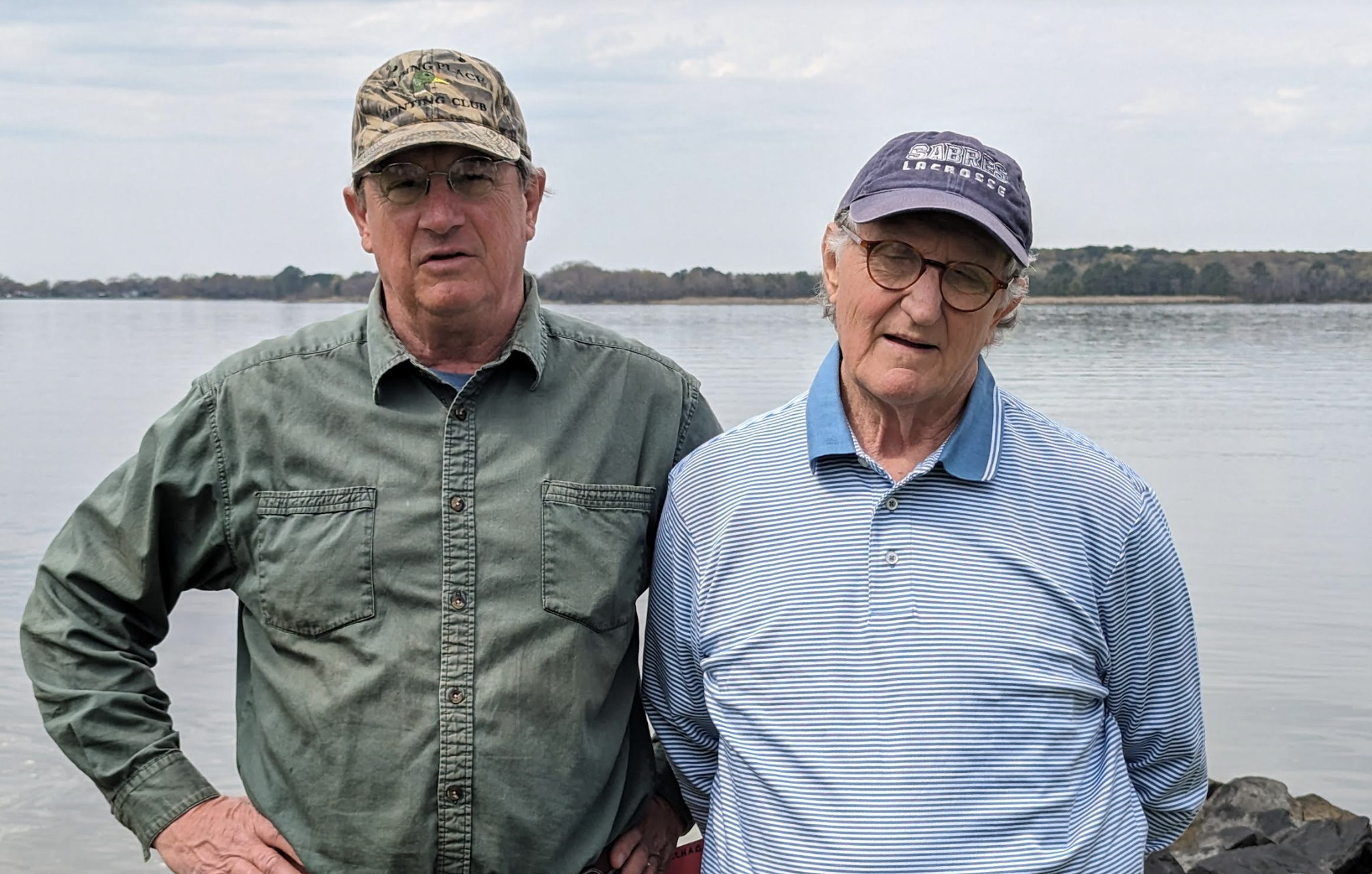
Bayly Buck & Matt LaMotte
LaMotte no longer hunts but still visits the club’s property whenever he can to take walks, birdwatches, and soak in either the solitude or camaraderie with other members. “Sitting on the porch and watching the sunset here is a unique and special privilege,” he says. “For me, it’s been a haven from the hustle and bustle of daily life as well as fellowship among a life-long group of close friends.”
Bayly Buck concurs. He says the Wading Place club is “a tradition handed down to us by the generation before us, which we now hand down to our kids, and recently to our grandchildren.
“Unrepentantly” borrowing the unofficial motto of Montana, Buck calls the club’s waterfront slice of the Eastern Shore “The Last Best Place.”
“Because we like to sit here (at the clubhouse) and watch the sunset sink into the water, I usually finish notes to the membership with “See ya on the porch.””
It’s a reminder and an invitation to enjoy life’s quieter moments.
See ya on the porch.
Brent Lewis is a native Chesapeake Bay Eastern Shoreman. He has published two nonfiction books about the region, “Remembering Kent Island: Stories from the Chesapeake” and a “History of the Kent Island Volunteer Fire Department.” His most recent book, “Stardust By The Bushel: Hollywood On The Chesapeake Bay’s Eastern Shore”won a 2023 Independent Publishers award. His first novel, Bloody Point 1976, won an Honorable Mention Award at the 2015 Hollywood Book Festival. He and his wife Peggy live in Centreville, Maryland.
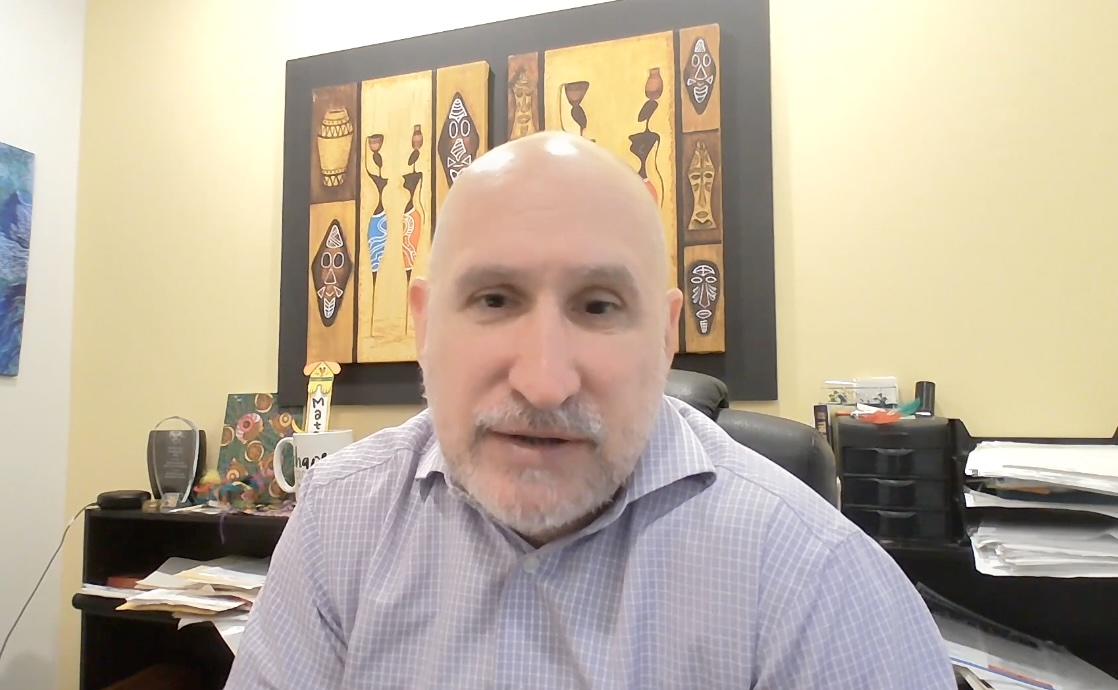




 The Wading Place, 2024:
The Wading Place, 2024: